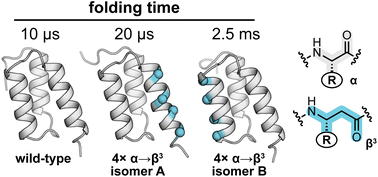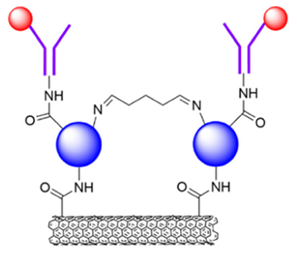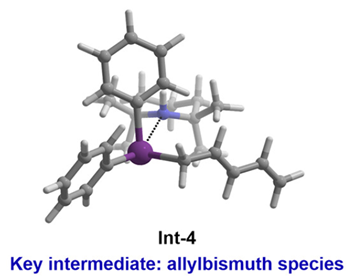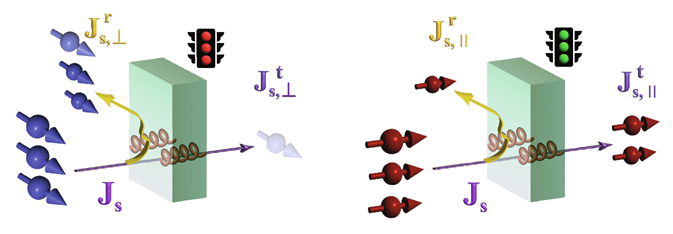Recent Highlights:
Effects of altered backbone composition on the folding kinetics and mechanism of an ultrafast-folding protein
(Chemical Science, 2024 – DOI: 10.1039/D3SC03976E)
 In this collaborative paper, the Chong and Horne groups used both experimental biophysical analyses and weighted ensembles of molecular dynamics simulations to investigate how modifying the composition of a protein backbone affected its folding kinetics. They found that backbone flexibility has a significant impact on the folding rate, with some flexibility-enhancing artificial monomers leading to a much slower folding rate but only when incorporated at specific locations. The study yielded new insights into how artificial backbone compositions can influence protein folding mechanisms at an atomic level which is important for design of protein mimetics as well as fundamental understanding of natural protein behavior.
In this collaborative paper, the Chong and Horne groups used both experimental biophysical analyses and weighted ensembles of molecular dynamics simulations to investigate how modifying the composition of a protein backbone affected its folding kinetics. They found that backbone flexibility has a significant impact on the folding rate, with some flexibility-enhancing artificial monomers leading to a much slower folding rate but only when incorporated at specific locations. The study yielded new insights into how artificial backbone compositions can influence protein folding mechanisms at an atomic level which is important for design of protein mimetics as well as fundamental understanding of natural protein behavior.
Diagnostics of Tuberculosis with Single-Walled Carbon Nanotube-Based Field-Effect Transistors
(ACS Sensors, 2024 – DOI: 10.1021/acssensors.3c02694)
 In this paper, the Star group presents a new diagnostic method for tuberculosis (TB) using a biosensor based on single-walled carbon nanotube field-effect transistors (SWCNT FETs). By functionalizing the SWCNTs with antibodies that detect a specific TB antigen, they achieved highly sensitive detection in both artificial sputum and blood serum samples. The device demonstrated the ability to distinguish between TB-positive and TB-negative clinical samples with high specificity, and has the potential to lead to faster, more affordable TB diagnostics, especially in low-resource settings, significantly improving public health outcomes.
In this paper, the Star group presents a new diagnostic method for tuberculosis (TB) using a biosensor based on single-walled carbon nanotube field-effect transistors (SWCNT FETs). By functionalizing the SWCNTs with antibodies that detect a specific TB antigen, they achieved highly sensitive detection in both artificial sputum and blood serum samples. The device demonstrated the ability to distinguish between TB-positive and TB-negative clinical samples with high specificity, and has the potential to lead to faster, more affordable TB diagnostics, especially in low-resource settings, significantly improving public health outcomes.
Transition Metal Mimetic π-Activation by Cationic Bismuth(III) Catalysts for
Allylic C–H Functionalization of Olefins Using C═O and C═N Electrophiles
(J. Am. Chem. Soc. 2024 – DOI: 10.1021/jacs.4c06235)
 In this paper, the Wang group and collaborators at the University of Marburg report the development of cationic bismuth(III) catalysts capable of mimicking transition metals for allylic C-H bond functionalization. These catalysts successfully create new carbon-carbon bonds in olefins, using carbonyl and iminium electrophiles, which are common in bioactive molecules. This approach offers a more sustainable alternative to traditional transition metal catalysis, expanding the utility of main-group elements in synthetic chemistry.
In this paper, the Wang group and collaborators at the University of Marburg report the development of cationic bismuth(III) catalysts capable of mimicking transition metals for allylic C-H bond functionalization. These catalysts successfully create new carbon-carbon bonds in olefins, using carbonyl and iminium electrophiles, which are common in bioactive molecules. This approach offers a more sustainable alternative to traditional transition metal catalysis, expanding the utility of main-group elements in synthetic chemistry.
Colossal anisotropic absorption of spin currents induced by chirality
(Science Advances 2024 – DOI: 10.1126/sciadv.adn3240)

In this paper, the Waldeck group and collaborators at NCSU describe their studies of the anisotropic absorption of spin currents in chiral metal oxides. They demonstrate that that the spin absorption is efficient when the electron spin is aligned with the chiral axis of the metal oxide and it is inefficient when the electron spin is perpendicular to the chiral axis. They report a selectivity of up to 30 to 1. This work shows that chiral materials offer a new approach to manipulating spin currents, which is important for next-generation spintronic devices.
Leveraging Ligand Steric Demand to Control Ligand Exchange and
Domain Composition in Stratified Metal-Organic Frameworks
(Angew. Chem., 2024 – DOI: 10.1002/anie.202409150)
 In this paper, the Rosi group demonstrates that increasing the steric bulk of ligands can minimize ligand exchange between strata during synthesis of stratified (or layered) metal-organic frameworks (MOFs), leading to more distinct compositional domains. They additionally introduce a "blocking layer" strategy to further limit ligand exchange, allowing for more controlled and diverse stratified MOF structures. This approach enhances the ability to design complex MOFs with tunable properties, which have potential applications in catalysis, gas storage, and drug delivery systems.
In this paper, the Rosi group demonstrates that increasing the steric bulk of ligands can minimize ligand exchange between strata during synthesis of stratified (or layered) metal-organic frameworks (MOFs), leading to more distinct compositional domains. They additionally introduce a "blocking layer" strategy to further limit ligand exchange, allowing for more controlled and diverse stratified MOF structures. This approach enhances the ability to design complex MOFs with tunable properties, which have potential applications in catalysis, gas storage, and drug delivery systems.

